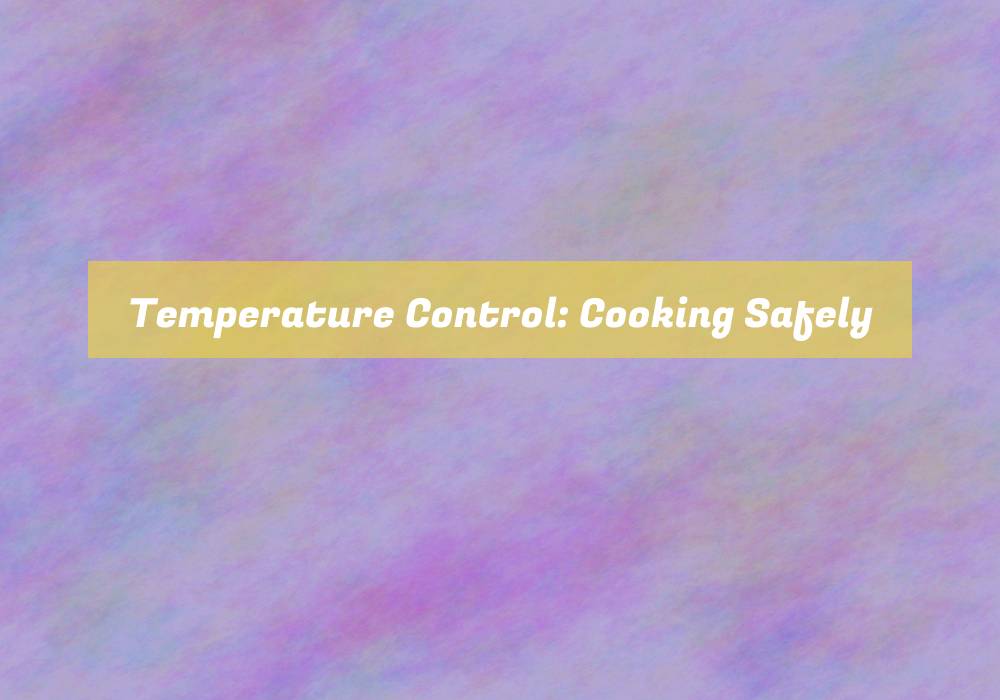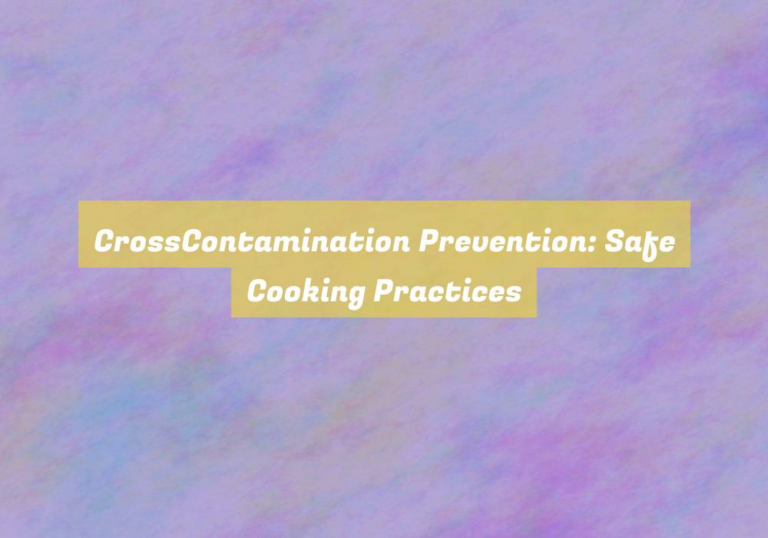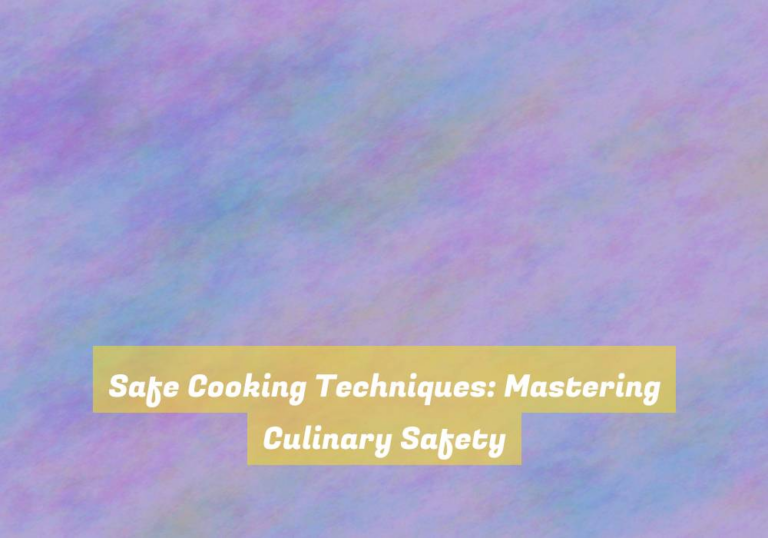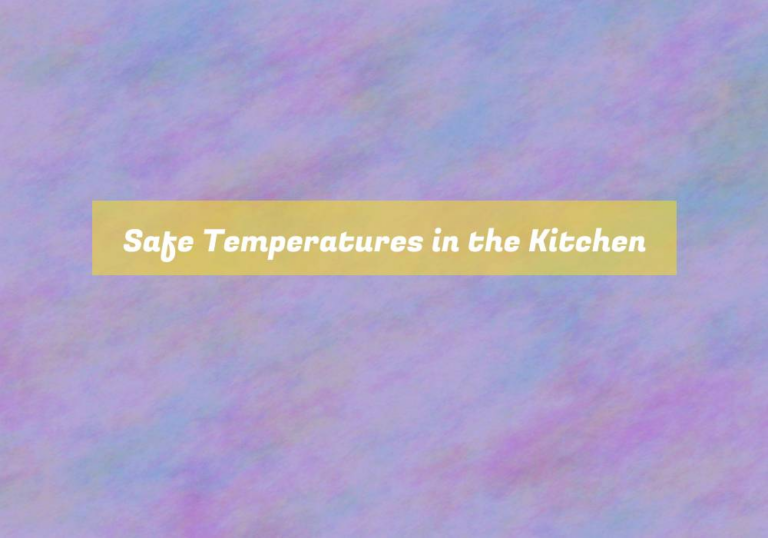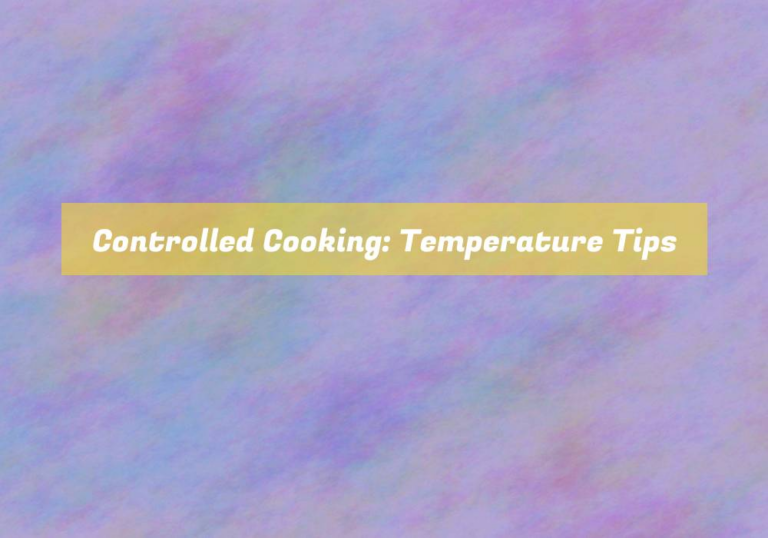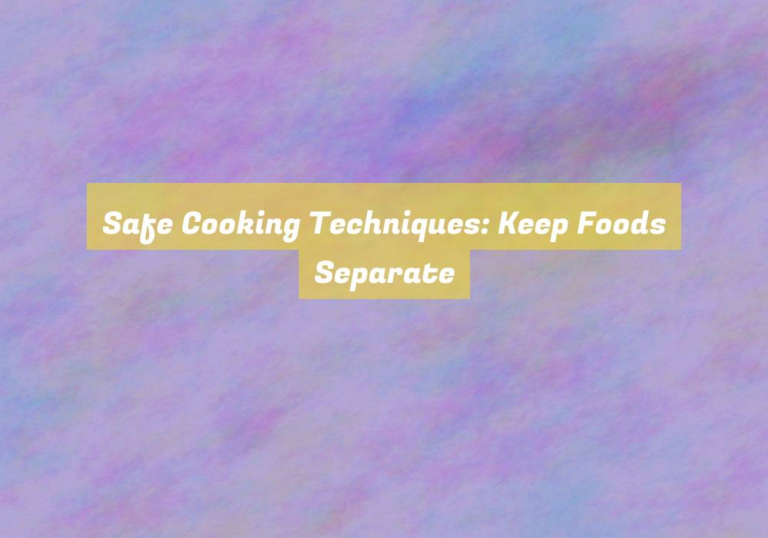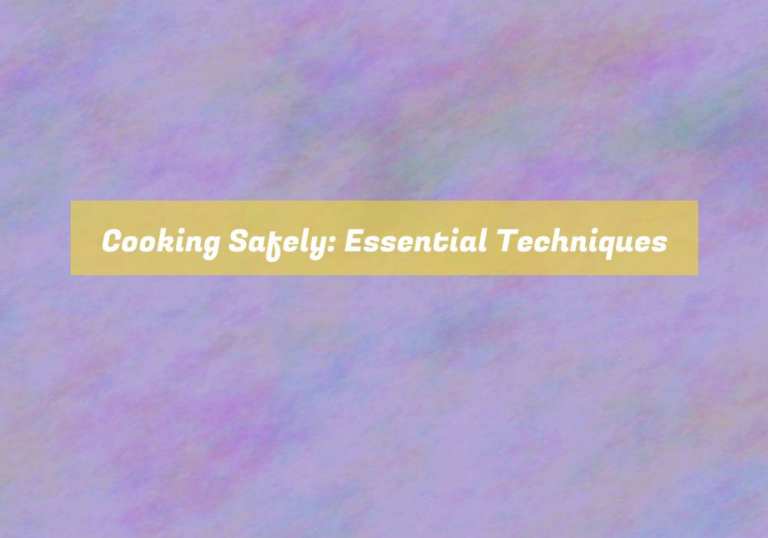Temperature Control: Cooking Safely
Have you ever wondered if cooking at the right temperature really makes a difference? You may think that as long as the food looks cooked, itG??s safe to eat, but thereG??s more to it than meets the eye.
Understanding the importance of temperature control in cooking is crucial for ensuring the safety of the food you prepare and consume. LetG??s explore how temperature control plays a critical role in cooking safely and why itG??s essential to pay attention to this aspect of food preparation.
Importance of Proper Cooking Temperatures
You should always ensure that your food reaches the proper cooking temperatures to eliminate harmful bacteria and prevent foodborne illnesses. Cooking to the right temperature is crucial because it kills bacteria such as E. coli, salmonella, and listeria that can cause food poisoning.
For example, ground meat should be cooked to at least 160-?F (71-?C), while poultry should reach a minimum temperature of 165-?F (74-?C) to be safe for consumption. ItG??s not just about the type of meat; leftovers, casseroles, and any prepared food containing meat or poultry must also reach these temperatures.
When cooking fish, it should be heated to 145-?F (63-?C) to destroy any bacteria or parasites. Failing to cook food to the proper temperatures can result in the survival and spread of harmful bacteria, leading to foodborne illnesses.
Using Food Thermometers Correctly
To ensure that your food reaches the proper cooking temperatures, itG??s essential to use food thermometers correctly.
When using a food thermometer, insert it into the thickest part of the food, away from bone, fat, or gristle. Make sure not to push it all the way through the food and that the tip is in the center. For thin foods like burgers or chicken breasts, insert the thermometer sideways.
Wait for a few seconds for the reading to stabilize.
The minimum internal temperatures for different types of food are crucial to follow. For example, ground meats should reach 160-?F, poultry should reach 165-?F, and fish should reach 145-?F.
Remember to clean your food thermometer with hot, soapy water before and after each use. This prevents the spread of harmful bacteria.
Safe Temperature Storage Guidelines
Maintaining proper temperature storage for food is essential to prevent the growth of harmful bacteria and ensure food safety.
When storing food, itG??s crucial to keep perishable items such as meat, poultry, seafood, and dairy products in the refrigerator at a temperature of 40-?F (4-?C) or below. Use an appliance thermometer to check the fridgeG??s temperature regularly.
Freezers should be set at 0-?F (-18-?C) or lower. Ensure leftovers are refrigerated within two hours of cooking.
When transporting food, use insulated coolers with ice packs to keep perishable items at the right temperature.
Additionally, store canned goods and other non-perishable items in a cool, dry place. Be mindful of expiration dates and storage instructions on food packaging to maintain quality and safety.
Remember to defrost frozen food safely by thawing it in the refrigerator, under cold running water, or in the microwave.
Preventing Foodborne Illnesses Through Temperature Control
Adhering to safe temperature storage guidelines is crucial for preventing foodborne illnesses through proper temperature control. ItG??s essential to keep hot foods hot, at 140-?F or above, and cold foods cold, at 40-?F or below.
Bacteria multiply rapidly between 40-?F and 140-?F, so itG??s important to minimize the time that food spends in this temperature range. When cooking, make sure to use a food thermometer to ensure that meat, poultry, seafood, and other cooked dishes reach a safe internal temperature. For example, poultry should reach at least 165-?F, ground meats should reach 160-?F, and whole cuts of meat should reach 145-?F with a 3-minute rest time.
Leftovers should be refrigerated within 2 hours of cooking and should be reheated to 165-?F before serving. When transporting food for picnics or events, use coolers with ice packs to keep perishable items cold.
Conclusion
So remember, cooking at the proper temperatures is essential for keeping your food safe to eat.
Always use a food thermometer to make sure your food is cooked to the right temperature.
Store leftovers at safe temperatures to prevent foodborne illnesses.
By following these guidelines, you can ensure that your meals arenG??t only delicious but also safe to enjoy.
Stay safe and happy cooking!

